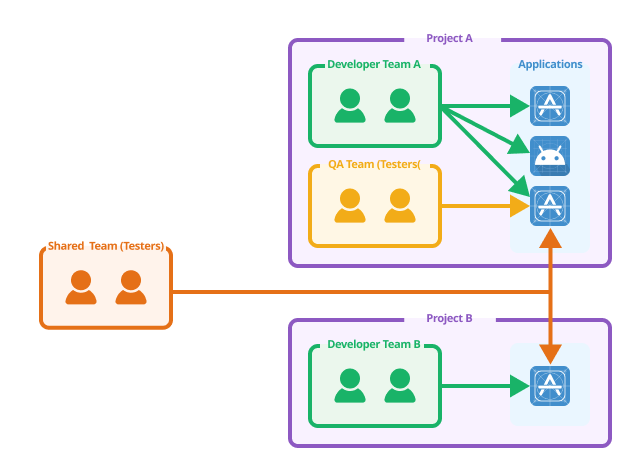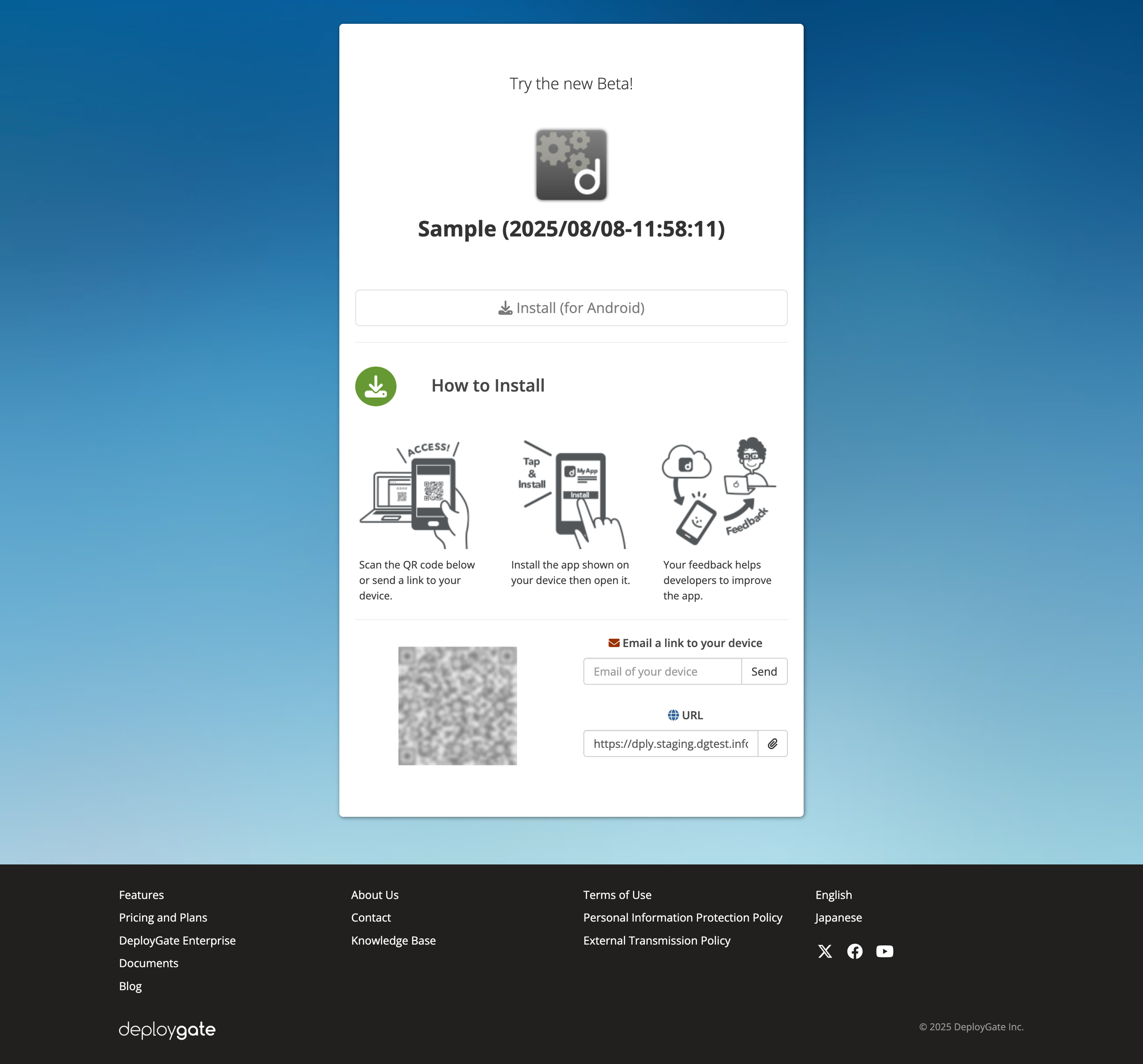Two Distribution Methods
In this post, we will discuss the two distribution methods that DeployGate offers - “Member Distribution” and “Link Distribution.”
For either distribution method, when distributing an Ad-hoc build, it is necessary to add UDIDs to the Provisioning Profile. For in-house distribution, UDID registration is not required.
Choosing the Best Distribution Method
DeployGate offers two ways to share apps.
- Distribution to Members
- Distribution by Link
Please select the most appropriate method, which may depend on the development phase or the type of tests you wish to perform.
Distribution to Members
The distribution to members method is designed for internal distributions to a team’s developers and QA testers. Please visit this page for information on what the member is.

Users must be registered with DeployGate in order to receive distributions.
Features
The following operations are possible using the distribution to members method.
- Manage members’ app installation permissions
- Install previous app revisions
- Members can install any revision of the app being distributed
- Members can install all apps they have access to
Because members must log in to their own DeployGate accounts, apps can be distributed more reliably and securely to specific individuals. When a developer uploads an update, members immediately receive a notification and can install the update.
Notifications are sent through the app on Android devices, while they are emailed to the registered email address on iOS devices.
Members can download past revisions that have been uploaded. This lets QA testers independently troubleshoot errors resulting from app updates, including triaging bugs and validating operations.
Please visit here for more information on how to distribute to members.
- For Free Plan, the maximum number of members is three, regardless of their permissions.
- For the Enterprise Plan (suitable for large organizations) and the Flexible Plan, the maximum number of members depends on the number of licenses, regardless of their permissions.
- If you are on a discontinued Corporation & Organization Plan (Startup, Business, or Large Business), please visit here.
Distribution by Link
The Link Distirbution is for external use by QA testers, beta testers, and others who are not part of the development team.

Features
The following operations are possible using the link distribution method.
- Create an installation link for only a specific revision of an app
- Distribute apps to individuals without a DeployGate account
Testers will access the distibution page and download an app via link or QR code. No need to register DeployGate for the installation.

Only one revision can be distributed per a distribution page. The developers can change the revision to be distributed and its URL won't be changed due to this operation.
Furthermore, you can create multiple distribution pages. This allows you to create and manage links for different purposes.
The number of installed devices using the distribution page does not count towards a plan’s “number of Members” limits.
Link Distribution only for members
Comparison Table
| Distribution to Members | Distribution by Link | |
|---|---|---|
| Security | 😃 Only invited users can download | 😰 Anyone with a link can download * You can set a password to restrict access * You can set a limit for the number of devices able to download the app |
| Visibility | 😃 Can view and manage download information - users, time/date, device (device ID, OS, etc.) | 😰 Can manage device information (OS type, OS version, device type) but cannot view or manage users who download * You can view more detailed information for testers with DeployGate accounts |
| Revision Management | 😃 Can download past revisions | 😃 Can only download a specific revision |
| Ease of Distribution | 😰 Relatively high barriers for testers, as all testers must register and have an account | 😃 Minimal barriers for testers, as they can simply launch the DeployGate app (Android) or use their camera (iOS) to scan a QR code and download |
| Price | 💵💵 For Enterprise and Flexible Plans, the number of licenses determines the number of available members | 💵 No effect on price *** Depending on the plan, there may be a limit to the number of links that you can create |
| Ideal Use Scenarios | If developing apps as a team and conducting tests with specific members | If distributing to people outside the project team, such as for alpha and beta testers |
| Member management | ◯ | × |
| Using Capture Feature | ◯ | × |